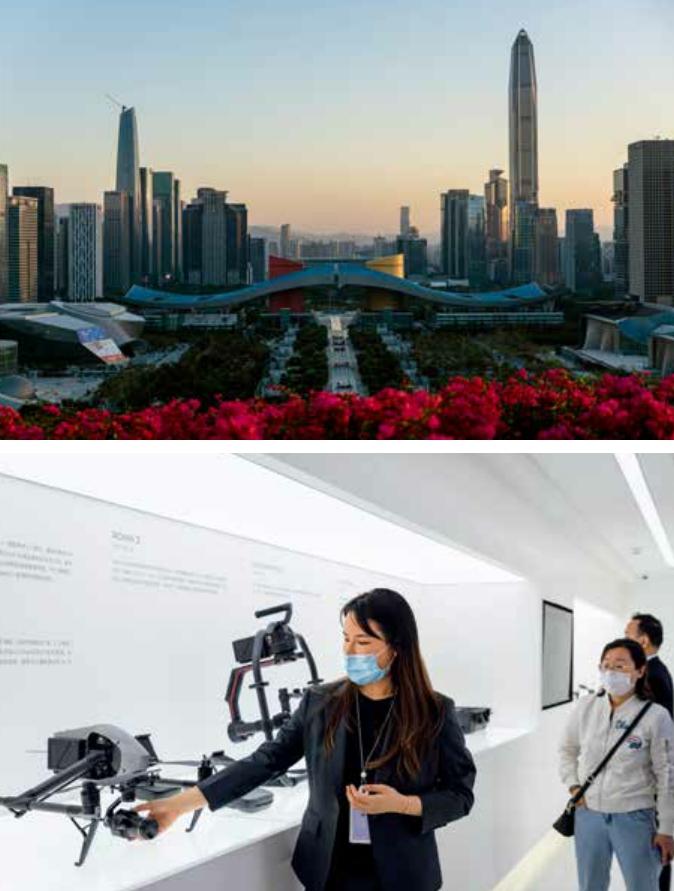Shenzhen: From Fishing Village to Tech Hub
2020-02-04byCecileZehnacker
by Cecile Zehnacker


Forty years ago, the land on which the city of Shenzhen now sits was just a rural stretch dotted with fishing villages. Late Chinese leader Deng Xiaoping, considered the architect of Chinas reform and opening up, recognized the value of the strategic location adjacent to Hong Kong and positioned it at the heart of the reform, so the city of Shenzhen was officially born in 1979. The city grew fast and eyed becoming an economic and financial center and a strategic hub for exchange between the mainland and Hong Kong. Shenzhen was established as Chinas first Special Economic Zone (SEZ), and offered benefits including lower tax rates. Public and private companies quickly flocked into the SEZ, making Shenzhen one of the fastest-growing cities in China.
As Shenzhen emerged as one of Chinas main financial centers (Shenzhen introduced its own stock market in 1990), a stream of tech companies started setting up shop there, all attracted by the great openness of the city. The limited city space soon became carpeted with impressive skyscrapers housing many tech companies. Some of Chinas biggest tech giants, such as Tencent, Huawei (the worlds biggest producer of telecommunication devices), and DJI (the world leader in civilian drone production), placed massive chunks of their operations in Shenzhen. Although most developed as pure tech companies, others such as Chinese insurance and financial behemoth Ping An, which settled in Shenzhen at an early stage, invested in technological development to support businesses.
Ping An settled in Shenzhens Shekou District in 1988. Starting with insurance and financial services, Ping An gradually integrated technological innovation into its strategy to offer comprehensive services using technology to support value creation. The insurance giant has developed many tech-related service ecosystems linked to healthcare, smart cities, traffic regulation, facial recognition, car services, and more. For instance, its car services include consultation, lending, post-sale services, insurance, and quick damage assessment. Ping An Good Doctor, a one-stop online healthcare portal, provides access to medical support to people from remote and poorer areas.
While most tech companies focus on a certain sector, Ping An has succeeded in combining technology with other services to optimally serve government departments, companies, and individual consumers. Ping An is also known for its impressive 599-meter-tall Ping An Finance Center, which is Shenzhens tallest building, Chinas second tallest(after Shanghai Tower), and the fourth tallest in the world.
Many Shenzhen-based tech companies have enjoyed meteoric rises. DJI(Da Jiang Innovations) was founded in 2006 by Frank Wang, a Zhejiang native and tech guru who developed his first prototypes in his university dorm. Thanks to an innovative and consumer-oriented strategy, DJI has become the worlds leader in civilian drones. It holds 70 percent of the global market share while its nearest competitor barely surpasses 5 percent. Over the years, DJI has expanded its offerings to meet consumer needs with new B2C products such as small, easy-to-use drones equipped with tiny cameras for live streaming, and B2B products such as drones for agriculture. The companys products are also used for other applications such as cinema and TV, and DJI sponsors university robotics competitions to stay true to its roots.
Shenzhen now hosts the annual China High Tech Fair, an event that attracts cutting-edge industry-oriented technologies from big companies as well as startups. This year, some of the most noticeable technologies addressed major contemporary issues such as emergency response, locally sourced technology and hardware, and information privacy. China State Construction Engineering Corporation Ltd. (CSCEC) developed the most advanced prefabricated building engineering technology to drastically cut construction time in emergency situations. During the coronavirus outbreak this year, CSCEC used the technology to build emergency treatment facilities at Shenzhen Third Hospital. IntelliFusion, a company that develops chips for smart cities, made a noticeable breakthrough by developing advanced AI hardware using only Chinese technology and hardware. ArcSoft developed facial recognition technologies for smartphones that respect privacy by only storing data offline on the users phone, an innovative technical advancement to address privacy concerns surrounding fast-developing facial recognition and AI technologies and growing risk of identity theft. The company also offers its software to small and mediumsized companies with open-source technology.
Shenzhens impressive growth has attracted people from across China to settle in the city, which has further enhanced its dynamics. By its 40th birthday, Shenzhen had become a young and multicultural melting pot of ideas and people from all over China, not to mention a large foreign community, attracted by the opportunities offered by Chinas youngest megacity.

As a result, Shenzhen has also gradually improved the city planning to offer an improved quality of life to its citizens. There are more than 1,000 free public parks all over the city, an advanced network of public transportation as well as measures to control and limit the traffic jam. The city now enjoys a burgeoning cultural sector with many music festivals and art events all year round as well as amazing exhibitions such as the ongoing “Values of Design: China in the Making” at the Sea World Culture and Arts Center, which showcases innovations for a sustainable future in China. Arguably the most creative exhibition features furniture made of recycled bikes provided by bike-sharing firm Mobike, which was recently acquired by Chinas online-to-offline service platform giant Meituan. This sought to breathe new life into bikes that had become unserviceable.
In only a handful of decades, Shenzhen has evolved from a rural tract into a key Chinese megalopolis brimming with both business opportunities and high living standards. Many left larger Chinese cities to settle in the young and dynamic newborn, attracted not only by business-centric local governance focused on offering Chinas best working and business development conditions, but also by the unique living environment the city affords.